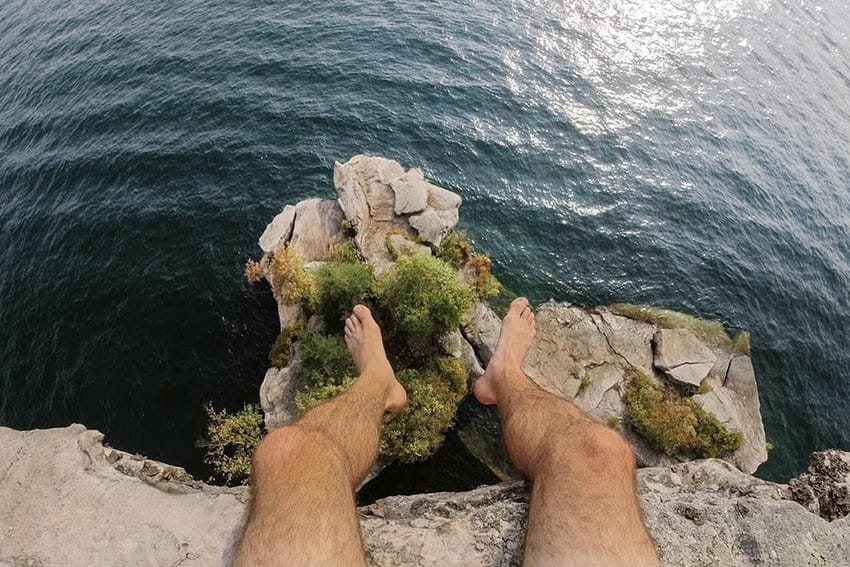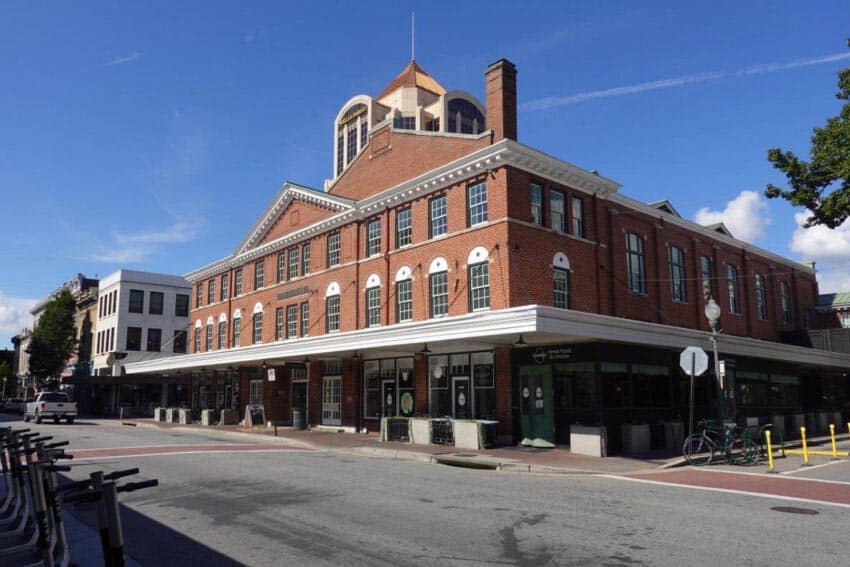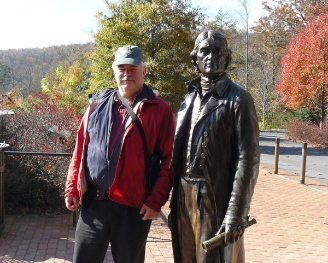
Richmond and Charlottesville VA: The Film Lovers’ Tour
By Stephen Hartshorne
GoNOMAD Associate Editor
The Boston Boy just got back from a fun-filled trip to Virginia that focused on the state’s status as a rapidly-growing center of the movie and television industries.
I learned a lot about moviemaking, saw lots of great films, dined like a king, and visited an amazing exhibit of Hollywood costumes at the Virginia Museum of Fine Arts.

The site of the 1607 settlement in Jamestown, Virginia is the oldest of the United States — edging out Massachusetts by 13 years — and it has everything you could want in a vacation destination.
From recreation of every kind, exquisite natural beauty, lots of great restaurants, fascinating art and history museums, and lots of really breathtaking historic architecture, much of it designed by Thomas Jefferson, the author of the Declaration of Independence and our nation’s third president.
As a guest of the Virginia Office of Tourism, I had a chance to tour Richmond and Charlottesville, two very vibrant cities with all kinds of cool shops and cafes and restaurants.
I got that feeling of urban revitalization that you pick up from GoNOMAD writers reporting on cities all over the country from Boise to Birmingham.
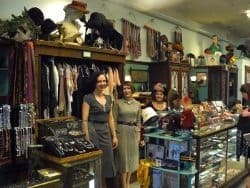
Richmond is consistently cited by publications like the Wall Street Journal and Forbes as one of the best cities in the country for businesses, and one of the happiest cities for young professionals.
There’s a lot of construction going on downtown, and lots of improvements to old neighborhoods, which these happy young professionals are reclaiming as their own.
A Shopping District with Character
Perhaps one of the best examples of this revitalization is Carytown in the heart of town, with more than 200 businesses, new and old. It’s like a giant outdoor shopping mall, except it has lots of character.
We visited the magnificent Byrd Theatre, built in 1928, a non-profit, community-supported “film center” that creates the kind of moviegoing magic old guys like me remember when we were kids.

The plush seats, the beautiful sculptures and murals and ornamentation, the Wurlitzer organ that rises up from the floor, these all combine for an experience you just can’t get by popping a DVD into your home entertainment console. And the tickets are only two dollars!
Right next door is Bygones Vintage Clothing, where you can pick up a classic fedora or a derby or a flapper dress. The shop has provided clothing to many of the movies and television shows produced in town.
Great Richmond Restaurants
We dined at The Daily Kitchen and Bar, where I enjoyed a memorable plate of seared scall0ps with pomegranate and sweet potato puree. They say you can dine out in Richmond every day of the week and never run out of great restaurants.
There’s a great Civil War Museum, an Aviation Museum, an Edgar Allen Poe Museum and many others, but one attraction you really don’t want to miss is the Virginia Museum of Fine Arts, with more than 30,000 works of art from just about every country and culture in the world.
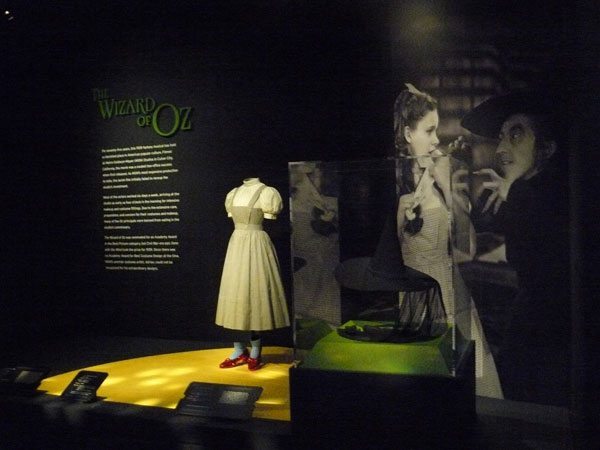
I had only a few hours to get lost in their collection of art and artifacts from the ancient world — Egypt, Greece, Rome, China, Peru, you name it, and they have a great collection of Art Nouveau, Art Deco, and Modern and Contemporary American art donated by (the late) Sydney and Frances Lewis.
We had the opportunity to tour the Lewis’ home nearby, where Frances Lewis is still collecting paintings, sculpture, and furniture.
Alas, it is a private home, we were asked not to take photos. Take my word for it, it’s an amazing collection.
Incentives for Moviemakers
Another highlight of our Richmond Tour was a visit to the Virginia State Capitol, designed by Thomas Jefferson, where Steven Spielberg filmed ‘Lincoln.’ His decision to film in Virginia was due in large part to the efforts of the Virginia Film Office to provide incentives and assistance to filmmakers and television production companies.
Lots of states have been offering tax incentives for film production, but Virginia goes the extra mile by offering help with permits, finding qualified technicians, location scouting, and other types of assistance that can make a filmmaker’s job easier.

And it’s well worth the effort. The film’s estimated impact on Virginia’s economy was around $64 million. Lincoln isn’t exactly the guy you would think of as Virginia’s favorite son, but perhaps he is now!
The total boost to the state’s economy from tv and movies is around $500 million a year. Hundreds and hundreds of television shows, commercials, movies and documentaries are shot there every year.
Expeditious Expediting
One reason Richmond is selected for movies like Lincoln and documentaries on notables like John Adams and Alexander Hamilton is that the state capitol, like the US Capitol, was designed by Thomas Jefferson and the buildings are nearly identical.
DC is a Hassle
Shooting in Washington, D.C. is difficult because you have to get permission from so many authorities from the Secret Service to the Park Service to the Capitol Police, not to mention the city authorities. In Richmond, the state film office can do a lot of expediting for filmmakers, so the permission process is a lot simpler.
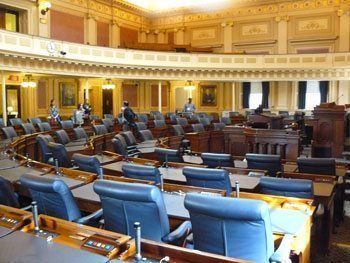
We toured the famous Hall of Delegates, home to the oldest deliberative body in the country, and it really did evoke the dramatic scenes from the movie in which Tommy Lee Jones and James Spader help Lincoln obtain passage of the 13th Amendment.
We even saw the covers they used to conceal the voting buttons on the delegates’ desks and the electronic tally boards on the front wall.
The Virginia Film Festival
After touring Richmond, it was off to the Virginia Film Festival in Charlottesville, another beautiful historic pedestrian-friendly city that’s home to the University of Virginia, another splendid example of Jefferson’s skill as an architect.
Nearby are Monticello, Jefferson’s home, the only private home listed as a UNESCO World Heritage Site, and Montpelier, the home of our fourth president James Madison.
The city’s famous Historic Downtown Mall is a stately combination of restored and renovated buildings with lots of cool shops and cafes and, of course, classic theaters like the Jefferson and the Paramount.

The Film Festival screens hundreds of films from all over the world, with appearances by movie greats like Jimmy Stewart, Anthony Hopkins, Sandra Bullock and Sigourney Weaver.
Almost Speechless
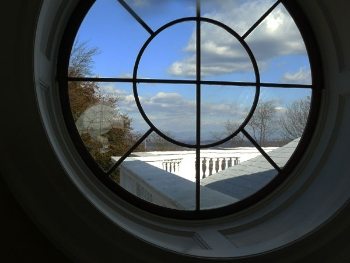
I guess I’d have to say the highlight of my trip was my visit to Monticello, which (almost) left me speechless. The spirit of the man is so well expressed in the beautiful mountaintop home he designed; you can literally walk into his world and see his books and his boots and his paintings.
Most of Jefferson’s possessions were auctioned off after his death, but the museum staff has been diligently buying them back over the years, and they have a great collection, which includes some of the samples and artifacts sent back by the Lewis and Clark Expedition. Unfortunately, photography is not allowed inside the building.
More than 500,000 people visit every year — thousands every day — but the staff do an excellent job managing the traffic with shuttle buses arriving every few minutes to take you from the visitors’ center to the mansion to the little cemetery where Jefferson is buried.
Relaxed and Unhurried
The tours move right along, but they’re very relaxed and unhurried. If you want to stop at his grave for a few minutes, you can just catch the next shuttle bus.
At the visitors’ center, they screen a short film, and at the end, they read from documents and manifestos from all over the world enumerating the inalienable rights of individuals and nations, all patterned on the Declaration of Independence, representing liberty for millions and millions of people.
Now half a million of them come here every year to pay their respects, and I was happy to be one of them.
- Greater Palm Springs: Art, Architecture, and Family Fun - April 11, 2019
- Derry, Northern Ireland: Fun and Festivals in the Walled City - August 14, 2018
- Georgia’s Film Industry is Booming - August 18, 2017



